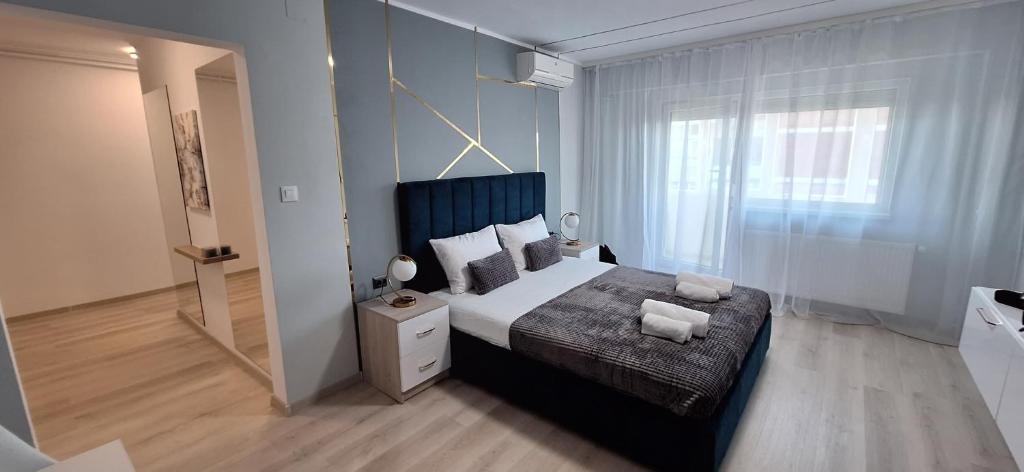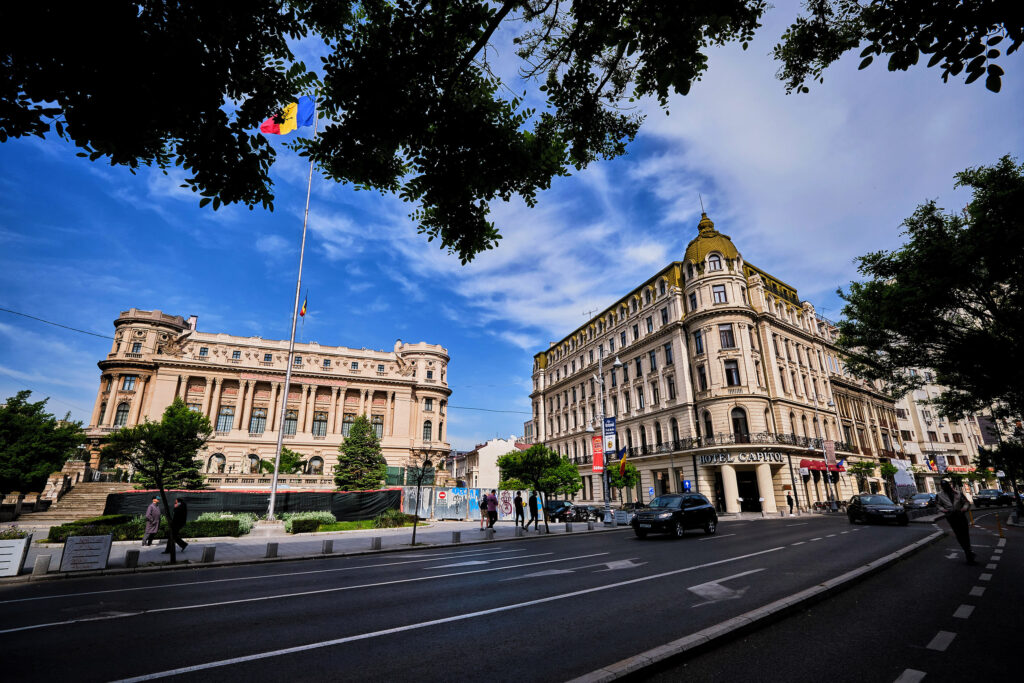It is impossible to walk for a few days through the city of Timisoara and not fall in love with this amazing city. Wandering around the streets of the old fortress, among the elegant facades of old palaces, or slowly floating along the peaceful Bega River, with the majestic cathedral in the background, we have to adhere to a slower pace of life in this enchanting destination!

Short Intro & History
Timișoara is the third city of Romania, with a population of over 300.000 people. Located in the western extremity of the country, it is the capital of the historical region of Banat. It is also considered the second cultural center of Romania and is the only city in Europe to have state theaters in three different languages: Romanian, German and Hungarian. It is also the first town in Europe to have electrical street lighting and countless other premieres.
Once known as „Little Vienna” thanks to the beauty of its architecture and renowned as a „city of flowers” for its many charming parks, Timișoara is truly worth exploring. Today, the city of Timisoara is one of the most important in Romania, a major industrial, commercial, financial, medical and university center. Visiting Timișoara means to discover its incredible past and amazingly rich legacy, with thousands of interesting buildings, inspiring museums, beautiful parks and a vibrant atmosphere.
Search for Flights to Timisoara on Booking.com!

The city of Timisoara has a fascinating and troubled past, dominating the surrounding area for centuries and being one of the most important strongholds during medieval times. The ancient settlements appeared in what used to be a swampy area, followed by the development of the first fortified town in the 12th century. The city of Timișoara was ruled and conquered several times by different military powers, once serving as the capital of the Hungarian Kingdom under Charles Robert of Anjou. It was conquered by the Ottomans and served as their military bastion for two centuries.
The Habsburg Empire conquered the fortress in 1716 and the city started developing rapidly to become one of the most important multicultural centers in this part of Europe. The whole region of Banat became part of Greater Romania in 1919, and so the city had Romanian administration for the first time. At the dawn of the 20th century, Timișoara had lost its military importance and the strong walls of the fortress were almost entirely removed to make room for further development.

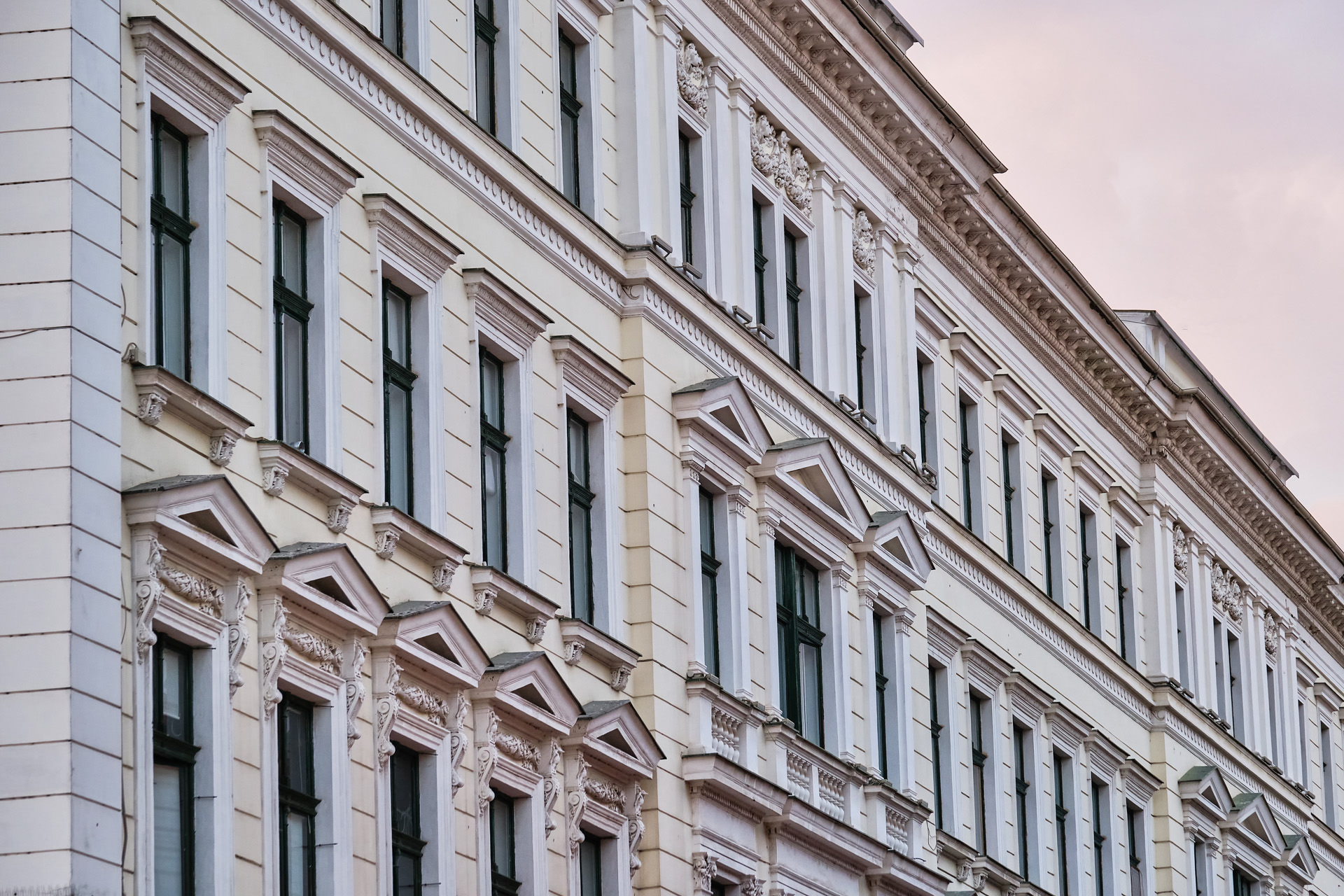
Tourist Sights of TimiȘoara
The main tourist area of the city is known as the Timișoara Fortress and is located at the center of the modern city, with most of the buildings having historical and architectural value. In fact, there are almost 15.000 historical buildings in the city, making it the largest architectural complex in the country. The old town of Timișoara is located inside the inner ring of the city and is almost completely car-free, surrounded by parks, large boulevards and the Bega River to the south.
Visiting the city of Timisoara is an extremely enjoyable experience, with superb buildings surrounding several large squares. These superb piazzas are connected by streets and include the impressive Victory Square, the quaint Liberty Square and the elegant Union Square. Other historical and architectural heritage monuments can be found in the old Josefin and Elizabeth quarters, south of the river, as well as the Fabric industrial quarter east of the old fortress.

Our exploration of the heritage of Timișoara is fairly easy and straightforward, with most attractions found within walking distance, and the entire old fortress area being a pedestrian-only zone. We can start discovering the city from its most distinctive landmark, the imposing and splendid Metropolitan Cathedral of Timișoara, located on the northern bank of the river and just south of the old town area.
A symbol of the city of Timisoara and an impressive architectural achievement, it was built between 1936 and 1941. It used to be the tallest religious building in Romania for a long time and one of the largest orthodox churches in the world. Its unique and rather unusual style was influenced by Byzantine and Moldavian churches, while its impressive towers rise to over 90 meters and have 11 beautiful spires. It also has seven massive bells and splendid interior paintings, as well as a rich collection of old books and icons.



Maybe the rich historical heritage, the strong multicultural yet homogenous community, the freedom and youthful spirit it exudes or the green spaces that embrace the city that make it such a fascinating and unique destination in Romania!
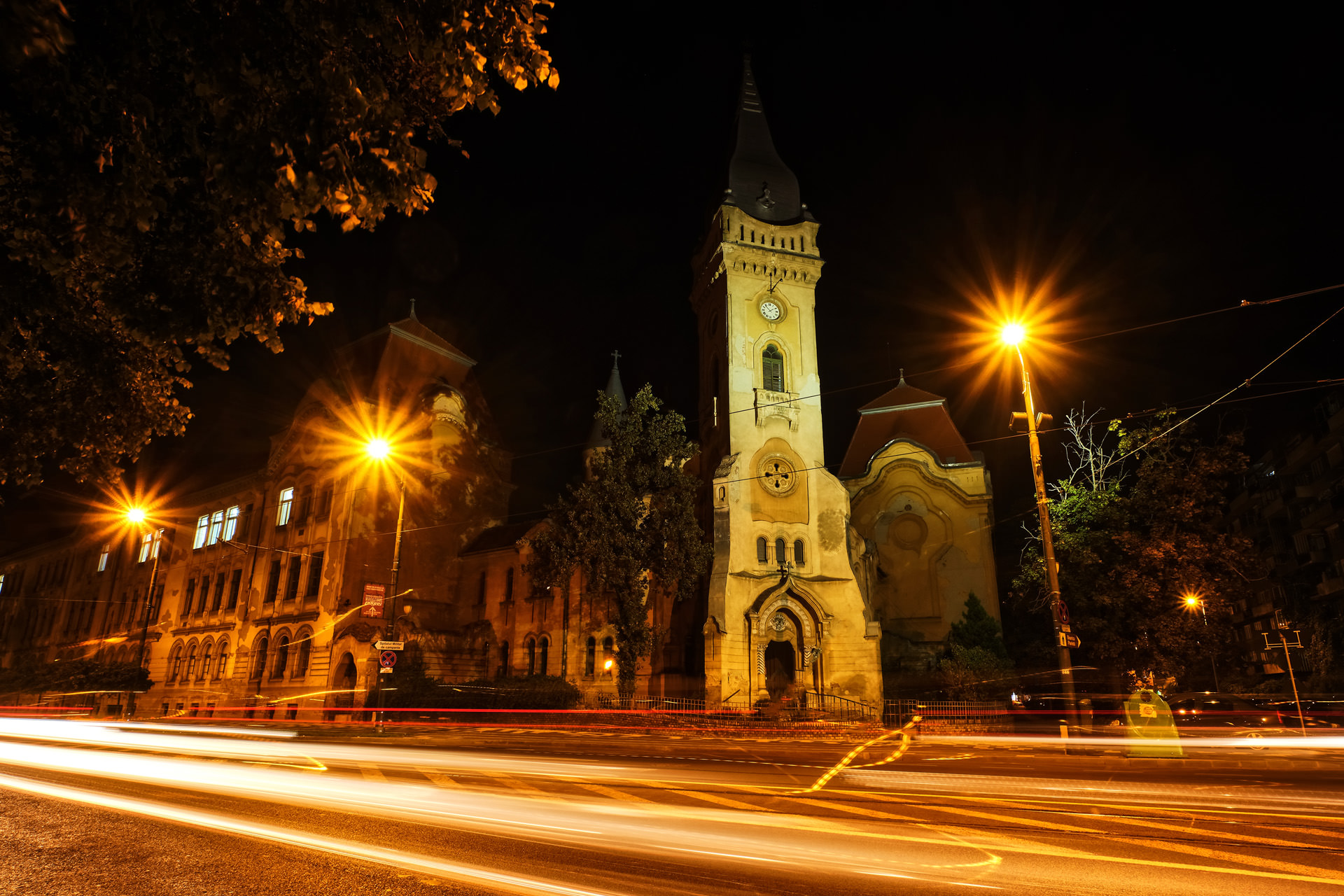
The cathedral is located at the southern end of the long and elegant Victory Square, flanked by several impressive palaces and filled with green areas and monuments. At its northern end, the square is enclosed by the beautiful building of the National Opera House of Timișoara. It was built in the second half of the 19th century as a Palace of Culture by two architects from Vienna. Damaged by two fires over the years, its facade was redesigned in a neo-byzantine style after 1920. It also houses the Mihai Eminescu National Theater, as well as the German and Hungarian theaters.
This square was also the epicenter of the 1989 Romanian Revolution that started in the city of Timisoara, when about 40,000 people gathered here on the 20th of December. The superb architectural complex that flanks the long square includes the Weiss, Lloyd, Neuhaus, Merbl, Dauerbach, Hilt, Szechenyi, Loffler and Commerce Chamber palaces, dating from the beginning of the 20th century.

A little to the west of Victory Square and close to the Opera House, we can find the oldest building to survive in Timișoara, a legacy from medieval times. The Huniade Castle was built between 1308 and 1315 by Charles Robert of Anjou, ruler of the Hungarian Kingdom. It was rebuilt by John of Hunedoara after the earthquake of 1443 and again in 1856 after being severely damaged during the 1849 siege of Timișoara. It housed the National Banat Museum, until it went under capital renovations in 2006 that are still ongoing.
Going north from the Victory Square, we quickly arrive in another charming space, the smaller Liberty Square, surrounded by superb buildings and dominated by the beautiful statue of St. Mary and St. John of Nepomuk. This square represents the oldest nucleus of the city of Timișoara, with some of the earliest buildings in the city, including the Old Town Hall, the Atlants House, the former War Chancellery, the Military Casino and the Garrison Commandment.
Other buildings located nearby include the former Hospital and Church of the Misericordia Order or the Franciscan Monastery Cloister. Most of these buildings date back to the 18th century. The spectacular Fortress Synagogue can be found a little to the north, built between 1863 and 1865 in a beautiful Moorish style.


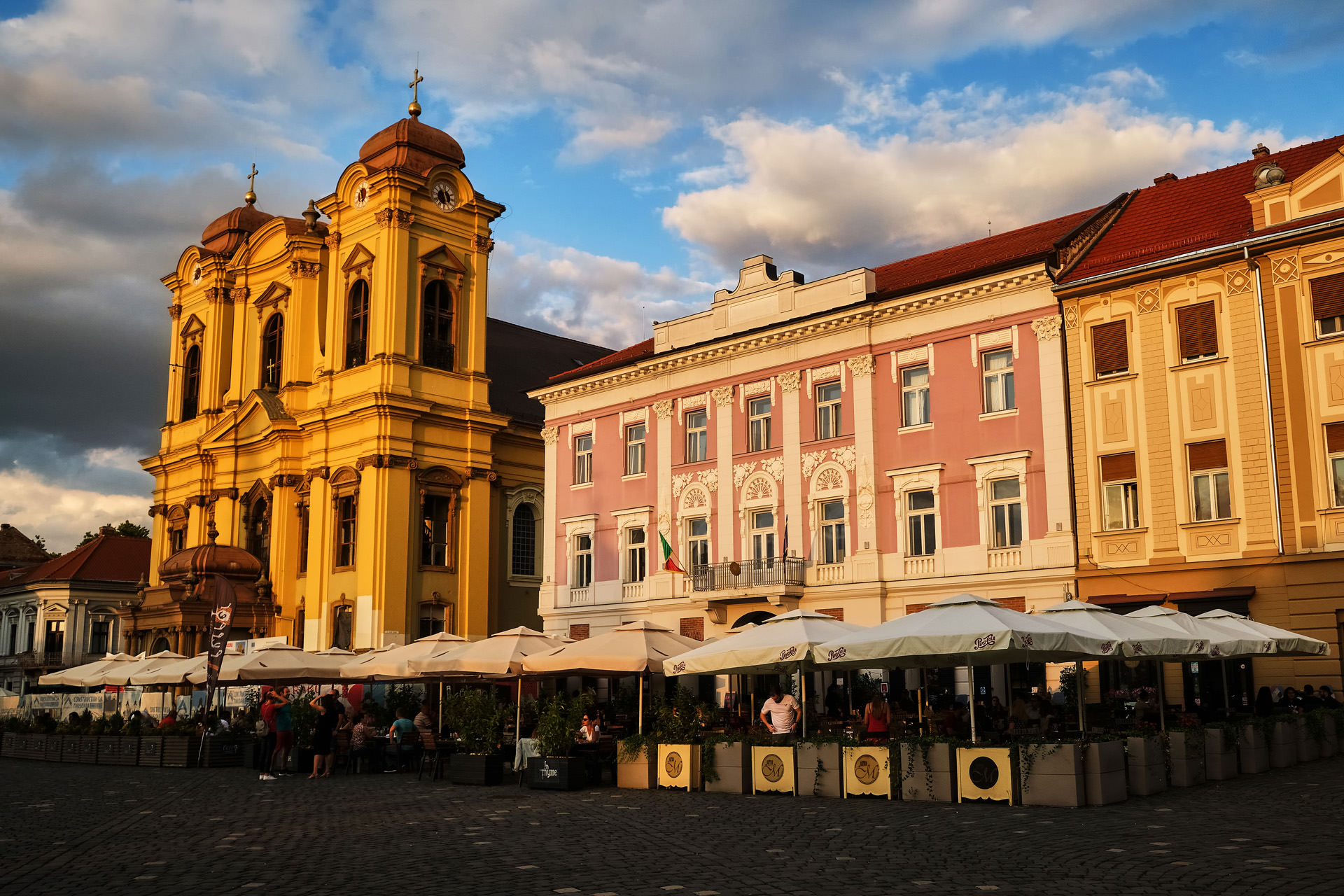
A few hundred meters to the north, the enchanting Unity Square delights us with its amazing architecture. The Holy Trinity Statue stands at the center, surrounded by elegant palaces and impressive churches. The eastern side is dominated by the majestic Roman-Catholic Cathedral of St. George, built between 1736 and 1774 in an elegant baroque style. While the exterior might look rather austere, the interior is spectacular, with nine beautiful altars, interesting icons, statues and a very old organ.
The western side includes the Serbian Orthodox Cathedral, which was built in the mid-18th century and faces another street. The southern side of Unity Square includes the superb Baroque Palace that once housed the central administration during the Habsburg rule of Timișoara. Today, it houses the fascinating Art Museum of Timisoara, including priceless and extensive art collections.
ART MUSEUM OF TIMISOARA | OPEN: Wed.-Sun. / 13.00 – 21.00 (summer) / 10.00 – 18.00 (Winter) | TICKETS: 35 lei/Adult (7 Euros)
It features old paintings and religious icons from the region of Banat, modern Romanian art, a Corneliu Baba collection, European art, decorative art, European graphic art and temporary exhibitions. The other palaces surrounding the square complete the whole architectural complex, including the Lion House, Bruck House, Emmer House, Dejan Palace, Bishop’s Palace and the Military Hospital.



Walking a little towards the east, we can first admire the Dicasterial Palace, built in the second half of the 19th century as a replica of the Medici Palace in Florence. Further along, there are the last remnants of the old fortress walls, today known as the Maria Theresia Bastion. It has been completely rehabilitated recently and is now an enchanting space that houses cultural activities and cafes.
It also includes the National Banat Museum, currently relocated from the Huniade Castle that has been under renovation for many years. The museum includes fascinating collections of history, archeology and natural sciences. A unique exhibit of the museum is the completely restored Parța Neolithic Sanctuary, about 6.000 years old and one of the few discovered in Europe.
Just a few steps to the northwest of Unity Square, the peaceful Botanical Garden offers a pleasant atmosphere. Timișoara is considered the city of flowers and a green destination, with many parks and gardens, especially along the Bega River, south of the old town area. The Civic Park, Central Park, Roses Park, Children Park, Justice Park and others create a green belt that gives the city a charming ambiance.



The small river that passes through the city of Timisoara is called Bega and is actually the first navigation channel to open in Romania. Recently, it is also served by vaporetto style boats that are used for public transportation; although we could use them as a cheap and pleasant way to explore the city. There are also many cycling paths all throughout the city, especially along the banks of Bega, going all the way to the Serbian border.
On the northeastern edge of the city, we can also take some time to explore the Banat Village Museum and the adjacent Timișoara Zoo, two extremely interesting and entertaining attractions. All of these and much more make Timișoara one of the most surprising and enjoyable places in Romania, a diverse and impressive city with a rich heritage and a fascinating past.



ACCOMMODATION INthe City of TIMISOARA
OLD TOWN HOTEL 4*
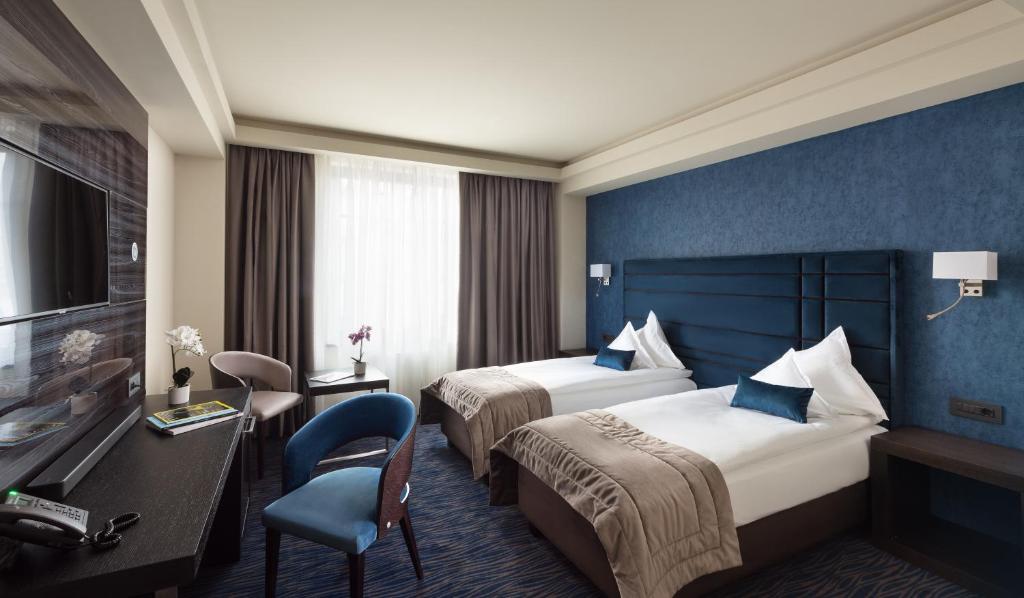
9.1 Rating from 1665 Reviews!
Located in the heart of the old town Timișoara, this excellent hotel has excellent reviews, offering great family rooms with bathrooms and seating area, a restaurant, shared lounge, a bar and beautiful views of the city!
CONTINENTAL HOTEL 4*
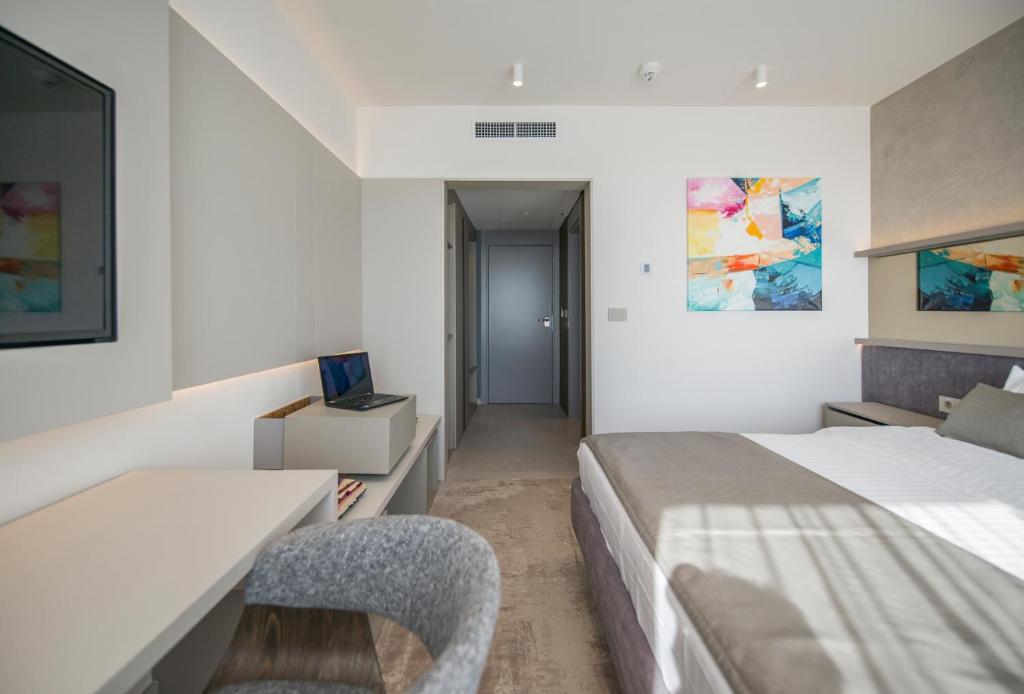
8.2 Rating from 1991 Reviews!
One of the most popular and renowned hotels in Timișoara, it offers comfortable rooms just a few minutes from the center, featuring impressive views of the city, a swimming pool, a bar, sauna, fitness center and a restaurant!

BEST RESTAURANTS IN TIMISOARA
- Sabres Restaurant – Craiova St. No. 1 – Extremely appreiate restauranst with amazing Mediterranean, European and Seafood menu!
- Vinto Restaurant – Florimund Mercy St. No. 4 – The restaurant, wine-bar and wine-shop offers a unique experience of pairing great food and wine!
- La Calul Alb Restaurant – Eugeniu de Savoia St. No 14 – Located inside the historical center of the city, this exquisite location offers a mix of contemporary and traditional cuisine, served in an innovative manner!
- Grill to Chill – Eugeniu de Savoia St. No. 12 – Best steaks in this part of Romania, with amazing dishes and pleasant atmosphere!
- La Pizza Napoletana – Argeș St. No 18 – Located just a few minutes outside the city center, this amazing Italian restaurant offers delicious traditional Neapolitan pizza in a great atmosphere!
- Jolie Bistro – Eugeniu de Savoia St. No. 8 – An excellent restaurant right inthe center of town, offering delicious European and Italian dishes!
